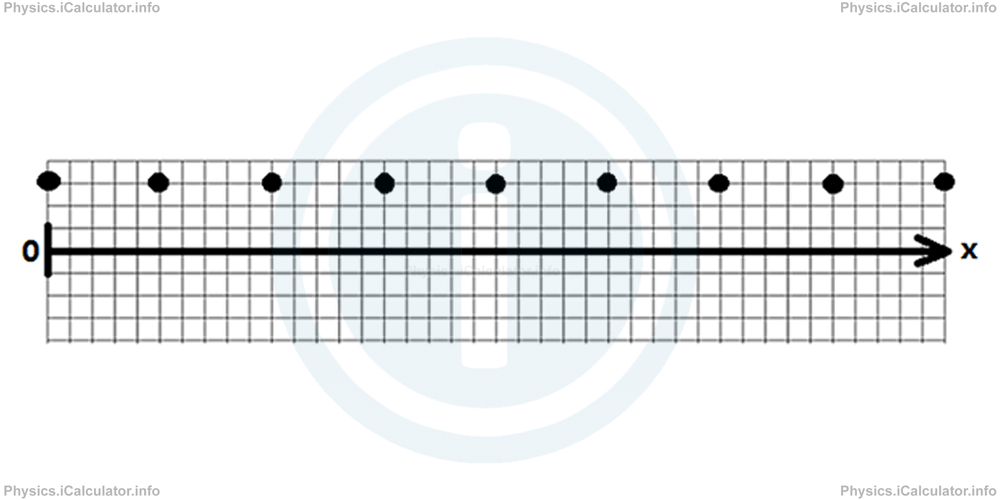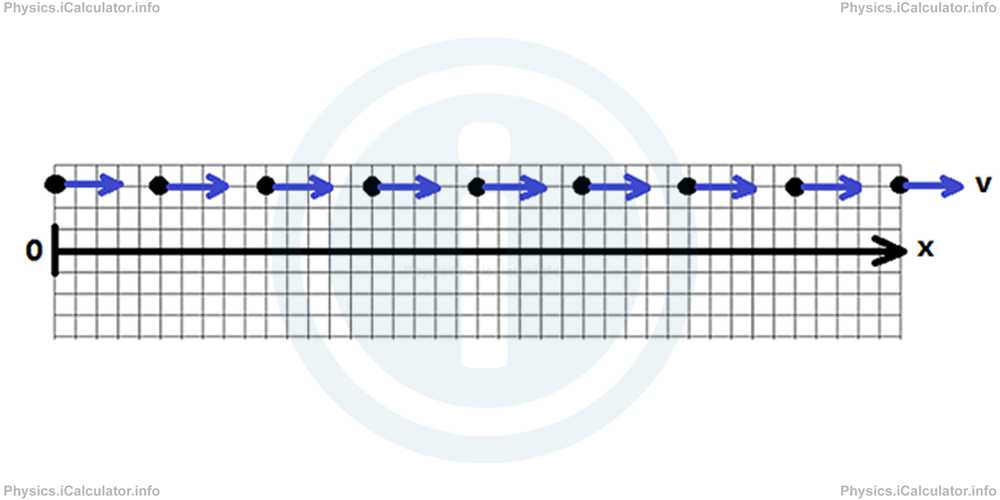Menu
Physics Lesson 3.7.1 - The meaning of Motion Maps
Please provide a rating, it takes seconds and helps us to keep this resource free for all to use
Welcome to our Physics lesson on The meaning of Motion Maps, this is the first lesson of our suite of physics lessons covering the topic of The Meaning of Acceleration. Constant and Non-Constant Acceleration. Gravitational Acceleration, you can find links to the other lessons within this tutorial and access additional physics learning resources below this lesson.
The meaning of Motion Maps
Before starting with the topic, it is worth explaining the meaning of "motion maps."
In Kinematics, Motion Maps are a useful visual tool for analysing and demonstrating what we know about how an object moves. In general, a motion map can represent the position, velocity, and acceleration of an object at various clock readings (we haven't discussed the acceleration yet, but we will cover it in this tutorial, so it is better including the concept of acceleration in the motion map explanation).
A motion map has many similarities with a motion graph. They both have a origin (reference point), a positive and a negative direction and they both include units. The only difference is that a motion graph doesn't show any object but only numbers. On the other hand, a motion map shows the moving object and the way how it is moving is shown through arrows. Longer the arrows, faster the object is moving.
The figure below represents a simple motion map.

The black dots represent an object "photographed" in equal intervals of time (clock readings). It is easy to notice that the object (the black dot) is making a uniform motion (it has a constant velocity) because the distance between two consecutive dots (which in fact represent the position of the object at every two consecutive equal time intervals) is always the same (5 units). Therefore, we can appoint a velocity vector (arrow) to each black dot whose length (in this case) is always the same. The arrow is also inserted to show the moving direction as it's not for sure the object is always moving in the positive direction. Look at the figure below.

We can understand this is a uniform motion judging on the arrows' length only. In this way, we don't have to check whether the object has moved the same number of units at each time interval.
We can appoint numbers to the units shown in the motion map. We can illustrate the time intervals with numerical values as well. For example, if one square represents 1 m and the time interval between two consecutive dots (the clock) is 0.5 s, we can find the following values:
Total Displacement = ∆x⃗tot = 8 × 5 m = 40 m
Time interval (clock) = ∆t = 0.5 s
Total time elapsed = ttot = 8 × 0.5 s = 4 s
Average velocity = < v⃗ > = ∆x⃗tot/ttot= 40 m/4s= 10 m/s
Instantaneous velocity = v⃗= ∆x⃗/∆t = 5m/0.5s= 10 m/s
(We have considered a single distance unit and consequently a single time interval when calculating the instantaneous velocity).
Since the above motion map represents a uniform motion (motion done at the same velocity), we can draw an important conclusion based on the above findings:
"In a uniform motion, the values of average and instantaneous velocity are equal."
This conclusion is drawn with the help of the motion map discussed above.
You have reach the end of Physics lesson 3.7.1 The meaning of Motion Maps. There are 5 lessons in this physics tutorial covering The Meaning of Acceleration. Constant and Non-Constant Acceleration. Gravitational Acceleration, you can access all the lessons from this tutorial below.
More The Meaning of Acceleration. Constant and Non-Constant Acceleration. Gravitational Acceleration Lessons and Learning Resources
Whats next?
Enjoy the "The meaning of Motion Maps" physics lesson? People who liked the "The Meaning of Acceleration. Constant and Non-Constant Acceleration. Gravitational Acceleration lesson found the following resources useful:
- Motion Maps Definition Feedback. Helps other - Leave a rating for this motion maps definition (see below)
- Kinematics Physics tutorial: The Meaning of Acceleration. Constant and Non-Constant Acceleration. Gravitational Acceleration. Read the The Meaning of Acceleration. Constant and Non-Constant Acceleration. Gravitational Acceleration physics tutorial and build your physics knowledge of Kinematics
- Kinematics Revision Notes: The Meaning of Acceleration. Constant and Non-Constant Acceleration. Gravitational Acceleration. Print the notes so you can revise the key points covered in the physics tutorial for The Meaning of Acceleration. Constant and Non-Constant Acceleration. Gravitational Acceleration
- Kinematics Practice Questions: The Meaning of Acceleration. Constant and Non-Constant Acceleration. Gravitational Acceleration. Test and improve your knowledge of The Meaning of Acceleration. Constant and Non-Constant Acceleration. Gravitational Acceleration with example questins and answers
- Check your calculations for Kinematics questions with our excellent Kinematics calculators which contain full equations and calculations clearly displayed line by line. See the Kinematics Calculators by iCalculator™ below.
- Continuing learning kinematics - read our next physics tutorial: Equations of Motion
Help others Learning Physics just like you
Please provide a rating, it takes seconds and helps us to keep this resource free for all to use
We hope you found this Physics lesson "The Meaning of Acceleration. Constant and Non-Constant Acceleration. Gravitational Acceleration" useful. If you did it would be great if you could spare the time to rate this physics lesson (simply click on the number of stars that match your assessment of this physics learning aide) and/or share on social media, this helps us identify popular tutorials and calculators and expand our free learning resources to support our users around the world have free access to expand their knowledge of physics and other disciplines.